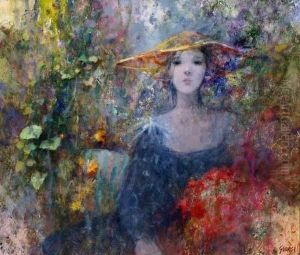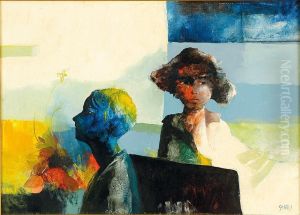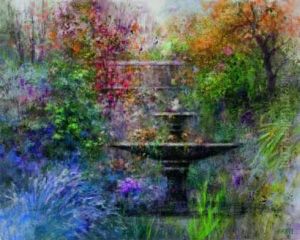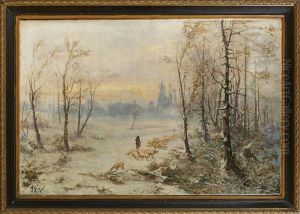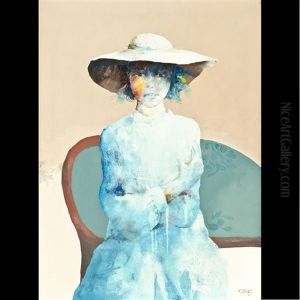Giuseppe Giorgi Paintings
Giuseppe Giorgi was an Italian painter and sculptor, belonging to the 20th century European art scene. Born on October 26, 1887, in the bustling city of Rome, Italy, Giorgi's life and career were deeply intertwined with the cultural and artistic movements that swept through Europe during his time. His artistic journey began in the early years of the 20th century, a period marked by rapid changes in art, including the advent of Modernism, Futurism, and later, Surrealism and Abstract Expressionism. However, Giorgi's work largely maintained a unique blend of classical and modern influences, reflecting his deep respect for Italian artistic heritage while exploring new forms and expressions.
Giorgi's education in art was rooted in the prestigious academies of Italy. He studied at the Accademia di Belle Arti di Roma, where he honed his skills in painting, sculpture, and drawing under the tutelage of renowned artists of the time. His early work was characterized by a strong emphasis on the human form, drawing inspiration from Renaissance masters as well as contemporary explorations of expression and form. Throughout his career, Giorgi exhibited a remarkable ability to adapt and evolve his style, experimenting with various mediums including oil painting, watercolor, and bronze sculpture.
The interwar period was a time of significant productivity and recognition for Giorgi. He participated in numerous exhibitions, both nationally and internationally, and his work began to garner attention beyond Italy's borders. Despite the challenging political and social climate of Italy in the 1920s and 1930s, Giorgi's art remained apolitical, focusing instead on timeless themes of beauty, nature, and the human experience. His sculptures from this period, in particular, show a mastery of form and movement, often compared to the work of his contemporaries in the Futurist movement, yet distinct in their classical sensibility.
Post-World War II, Giorgi's art took on a more introspective and abstract direction. The trauma and devastation of the war led many artists of his generation to question the role of art and the artist in a changed world. Giorgi's response was to delve deeper into the emotional and spiritual dimensions of art, exploring abstract forms and the interplay of light and shadow, which became defining features of his later work. During this time, he also engaged in teaching, passing on his knowledge and passion for art to a new generation of Italian artists.
Giuseppe Giorgi's death on April 9, 1972, marked the end of an era in Italian art. His legacy, however, lives on through his diverse body of work, which continues to be celebrated for its blend of classical beauty and innovative experimentation. Giorgi's contribution to Italian art is remembered as one of bridging the gap between the traditional and the modern, earning him a place among the notable artists of the 20th century.
